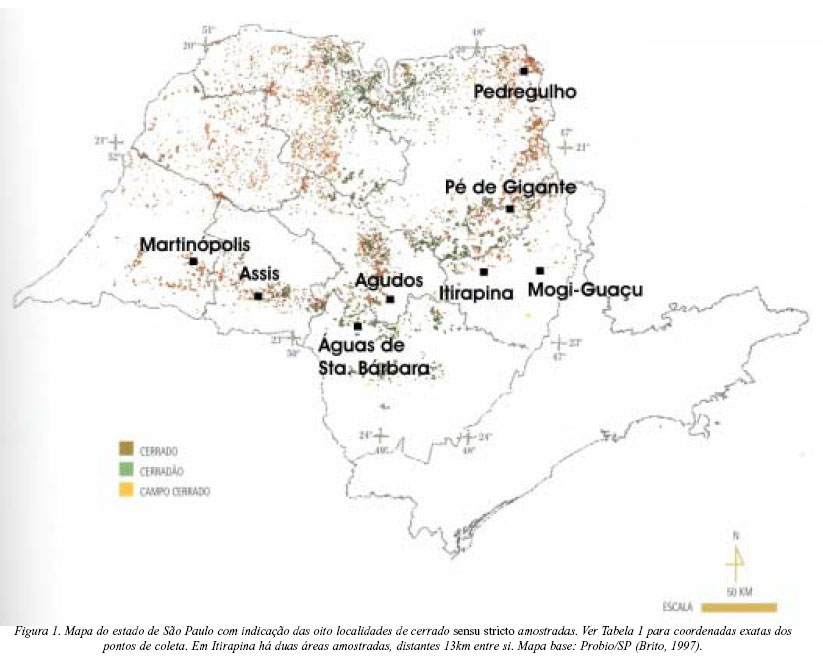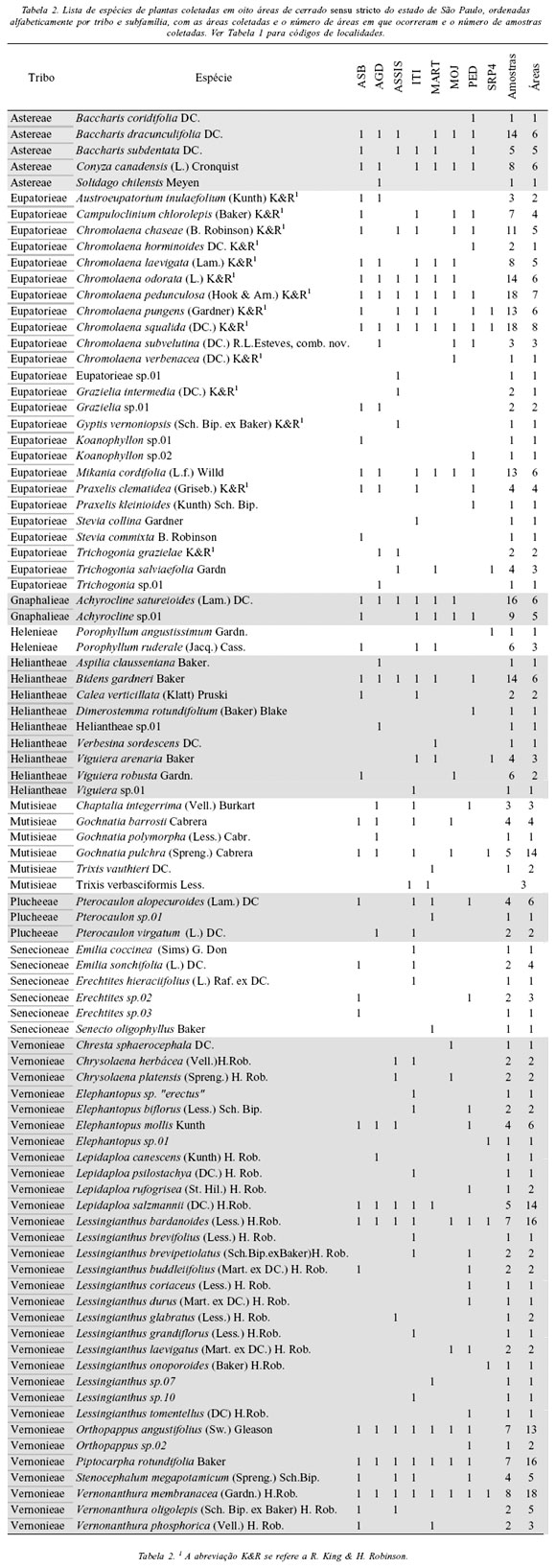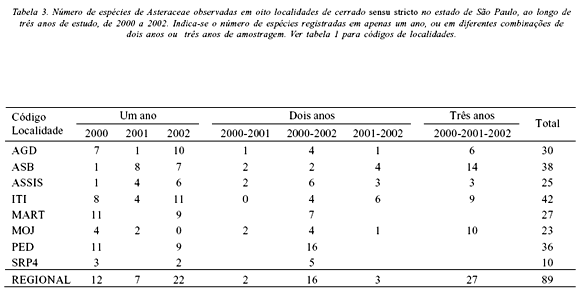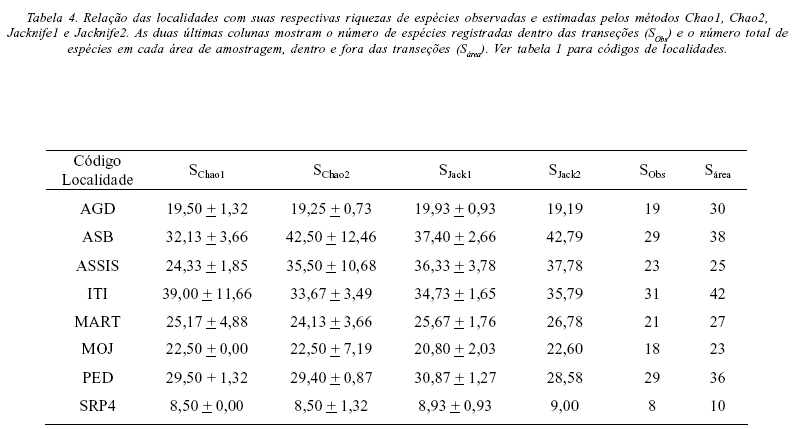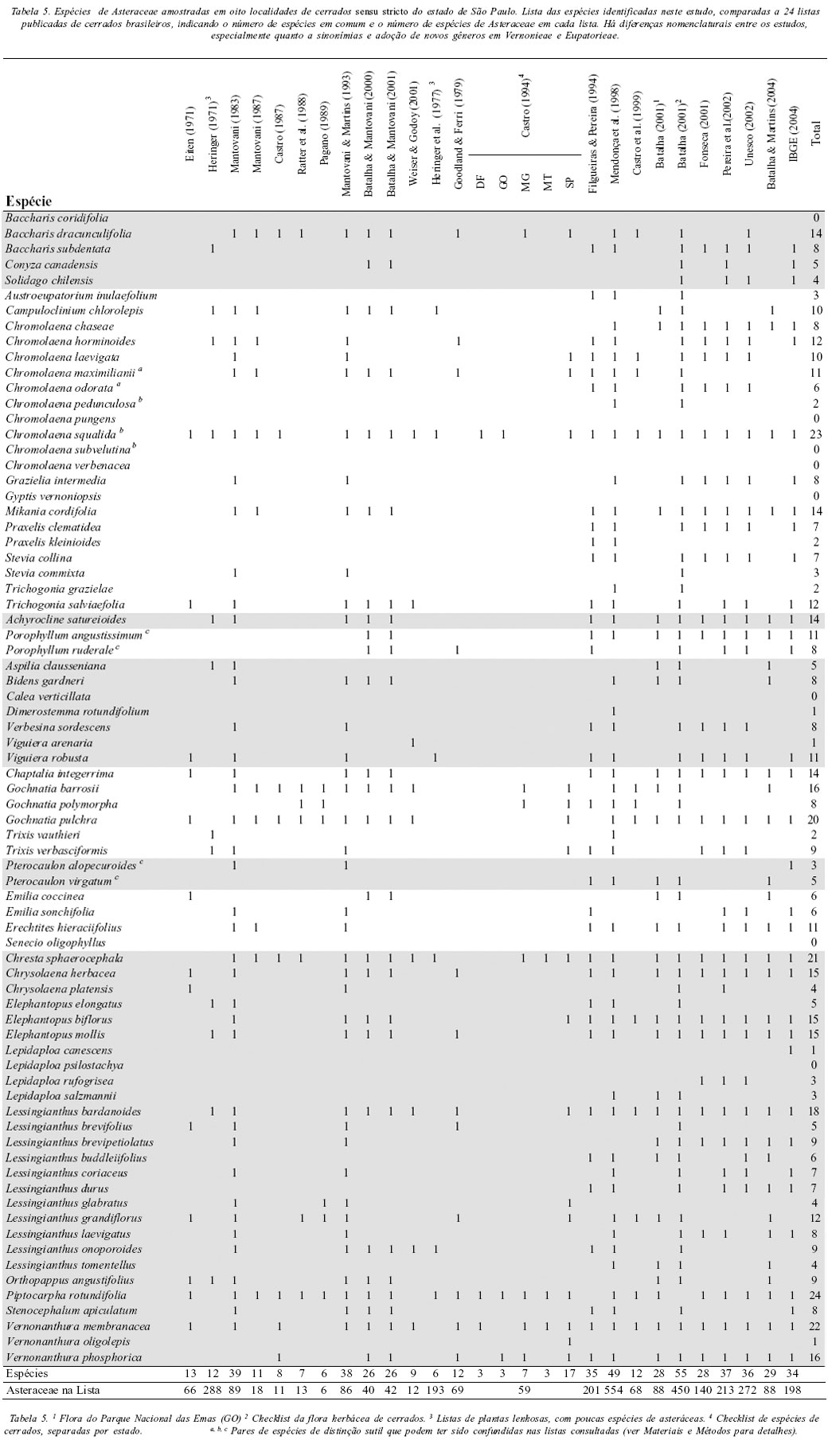Eight "cerrado" (savanna) fragments in the State of São Paulo (Brazil) were surveyed from 2000 to 2002 to produce an inventory of Asteraceae species. This family is one of the most important in the herbaceous and shrubby components at cerrados. Each fragment was sampled on average once a year during the plants' peak flowering period, using a fixed number of randomly placed transects. We obtained 399 samples and recognized 89 morphospecies (of which 74 were identified to species). Forty percent of the species were encountered only once (unicates). Only ten percent of the species that occurred in more than a sample were recorded again in the same fragment or in the same year. Species richness was estimated from frequencies and abundances within transects, and then compared to the observed total richness in the area, which was most of the times higher than the estimates based on transects. Our species list was then compared to other 24 cerrado species lists in the literature. Although most of our commoner species were recorded in published lists, eight species were not found in any. We conclude that the studied cerrado fragments in São Paulo State are isolated and fragile areas composed of many rare and exclusive herbaceous and shrubby species. We suggest that the maintenance of current diversity of Asteraceae species depends on maintaining and preserving all cerrado fragments in the State.
Asteraceae; cerrado; savanna; biodiversity; São Paulo; Brazil

